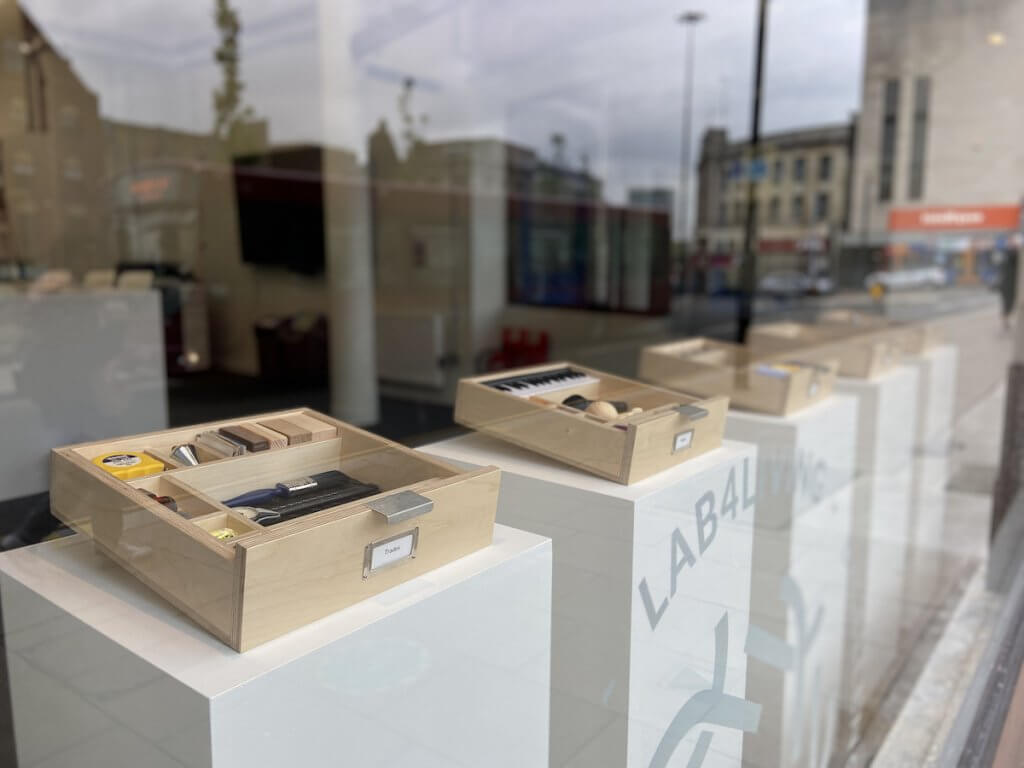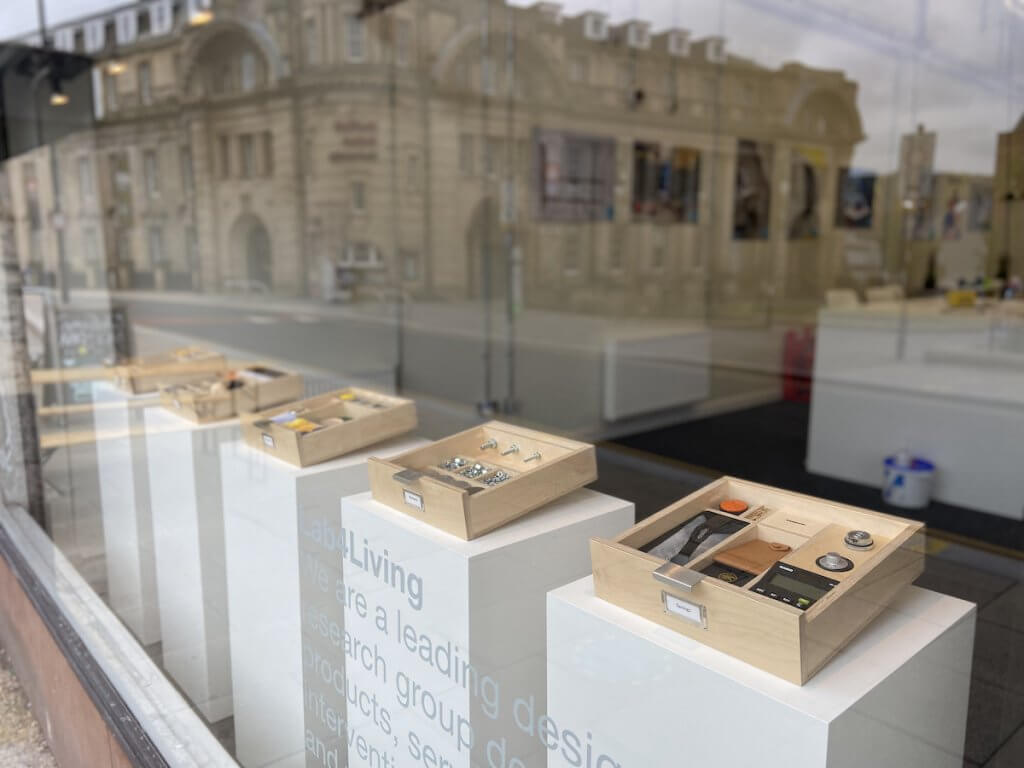This enquiry explores the role of design in reimagining the future care home. It focuses particularly on the role of design in the creation of research informed products to promote meaningful engagement between residents in the home, their families and care staff.
Funded by: Research England
Team: Claire Craig, Helen Fisher, Tom Maisey
Partners: Kathryn Rawling, Sheff Care
Older people living in care homes have some of the most complex needs of society (BGS 2016). Whilst there is a high level of consensus that participation in meaningful activity leads to increased quality of life for older people (Han et al 2016, Wenborn et al. 2013) repeated studies have highlighted the limited opportunities older people living in care homes currently face when accessing this provision. Mozely’s study, for instance, identified in her study of 100 homes that 80% of the homes provided less than 6 minutes of activity per resident per day. A similar picture was presented in Hancock’s research (2006).
Ensuring engagement in meaningful activities as we age is crucial in maintaining physical and mental wellbeing as well as quality of life. A lack of desirable, age-appropriate products for people living in care homes reduces engagement in meaningful activity, leading to boredom and depression. Challenges to physical and mental health have increased through isolation from families during the COVID-19 pandemic. This is particularly problematic for people with dementia who cannot initiate occupational engagement and interaction.
In response to this unmet need design researchers in Lab4Living have been investigating the development of ludic artefacts to support the wellbeing of older people (Craig, 2014, Craig, Chamberlain and Fisher, 2018; Fisher, Craig and Chamberlain, 2019 and Maisey and Craig 2016). To date, residents from over 10 care homes in Sheffield have participated in the study and a number of research informed products have been created. These are currently being evaluated.

Cabinet of Curiosities
Each drawer is an occupation focused collection of objects which helps navigate memories of peoples’ lives and the roles they had, in order to imbed a sense of purpose. The drawers provide opportunities for meaningful conversations through a sensory based experience, drawing on textures, sounds, smells and familiar objects.
The research raises questions about meaning and value in the context of the care home and the potential to re-imagine this space and the interactions that occur there.

Being part of this project has been an extraordinary and wonderful experience, you are transforming the lives of individuals I work alongside
Sheff Care Member of Staff
 to top
to top
